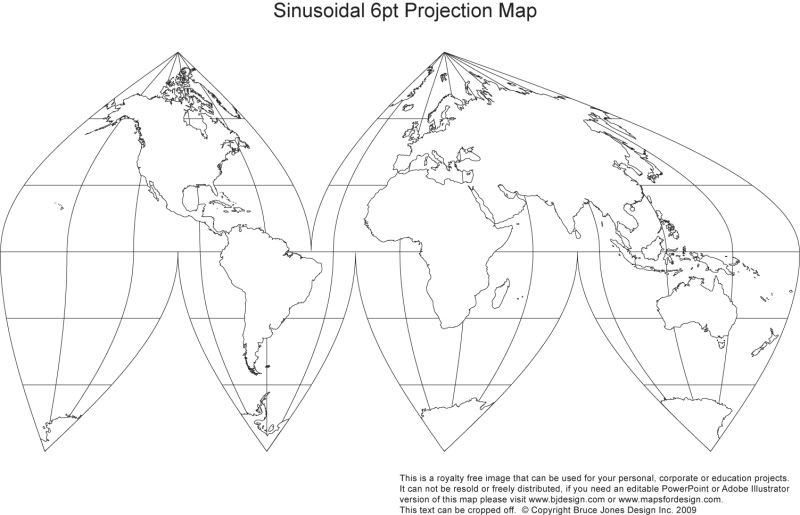Maps of the world are often criticized for being inaccurate to the true sizes of the various continents. First there's the fairly standard one which makes Greenland is large as pretty much all of North America and Alaska the size of the entire mid-west then there's another version the smooshes the higher latitudes and lower latitudes while "normalizing" the more central ones.
I understand you're trying to take something that's on a spheroid surface and trying to represent it onto a flat diagram but is it really so hard to do without jacking up the size of things?
From our piddly little perspectives the Earth is pretty much "flat" to begin with. So why can't a flat, plain, map of the globe be made that accurately shows the sizes of all of the continents without having to alter them and without the "flattened" map be a crazy looking jumble and rather be rectangular. The rule with which you'd have to use measure distances would probably have to pretty non-intuitive, sure, but it can't be that hard to take something that is 24,000 miles round and condense it into a flat, straight, surface that's a foot or so across (depending on the size of map you want.)
I understand you're trying to take something that's on a spheroid surface and trying to represent it onto a flat diagram but is it really so hard to do without jacking up the size of things?
From our piddly little perspectives the Earth is pretty much "flat" to begin with. So why can't a flat, plain, map of the globe be made that accurately shows the sizes of all of the continents without having to alter them and without the "flattened" map be a crazy looking jumble and rather be rectangular. The rule with which you'd have to use measure distances would probably have to pretty non-intuitive, sure, but it can't be that hard to take something that is 24,000 miles round and condense it into a flat, straight, surface that's a foot or so across (depending on the size of map you want.)




